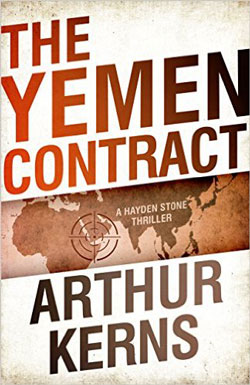
One night, after working on a murder mystery that was going nowhere, I toyed with the idea of starting an espionage thriller series. Along with tossing around possible locations and when the action would take place, I had to come up with realistic characters. Who would be the protagonist?
Naturally, all the interesting people I met through the years who had served in the FBI, CIA, and other intelligence organizations came to mind. My hero, who I named Hayden Stone, had to have a unique face and behavior, perhaps a composite of all those people I knew. However, what experiences in his intelligence career would shape Hayden Stone at this particular time in history—the post-World-Trade-Center-attack world?
I began to think back on my career. Years ago, when I was first assigned to the FBI counterintelligence squad in New York City, the atmosphere in the office was what could have been termed “clubby.” A newly assigned agent to the squad was smart to be low-key and hope to be taken under the wing of one of the seasoned veterans. You had to learn the tricks of the trade, and, at that time, the tools were file reviews on your target, physical surveillance, and informants—which, in the intelligence parlance, we called assets.
New York City was a melting pot of espionage and, from what I hear, still is. Spies from all countries walked the streets looking for the opportunity to spy on the US, on other countries, sometimes on themselves. For a young agent, going to work was exhilarating.

Counterintelligence gets into your blood. It’s a different mindset from being a spy but, on the other hand, there are similarities. A takeoff on the old expression about catching a thief: it takes a spy to catch a spy. FBI agents match wits with spies, and if they’re good at their job, the targets are wise to look over their shoulder and be worried about being wrapped up.
The atmosphere changed when I was assigned to the newly formed counterterrorism squad. No longer did the well-mannered rules and understandings of the espionage game apply. The targets, now, were killers and thugs with a different set of rules.
Now, the FBI had to work with other members of the Intelligence Community to face the threat in the United States, as well as abroad. The tools available to the counterterrorist agent had to expand. Time became a critical factor. An agent could no longer spend months, sometimes years, developing a program to ensnare the opposition. Human intelligence had to be augmented by technical tools. A counterterrorist agent had only days, maybe hours, to stop a terrorist intent on bombing a US embassy or kidnapping a US citizen.
Thus blossomed the array of technical and electronic devices and techniques designed to locate and track the terrorist. Some of the wizardry we see in the James Bond films actually exists.
Soon, reliance on technical coverage to thwart the terrorists grew to the detriment of the street-level effort. The results, when good, came fast and timely. Decision makers directed resources away from human intelligence to these new, costly programs.
However, the horrific successes of the terrorists forced a reevaluation of this mindset. It was realized that human intelligence had to have a bigger role in the counterterrorist portfolio. Agents and assets were necessary to combat and infiltrate terrorist networks.
 This is how I envisioned the role of my protagonist Hayden Stone. A retired FBI agent who had worked counterintelligence and counterterrorist cases—a person who had been bypassed for a time by the modern world and was now called back by the CIA to confront the terrorist threat overseas.
This is how I envisioned the role of my protagonist Hayden Stone. A retired FBI agent who had worked counterintelligence and counterterrorist cases—a person who had been bypassed for a time by the modern world and was now called back by the CIA to confront the terrorist threat overseas.
He is a street agent—a journeyman in the intelligence trade who relies on old fashioned, time-proven techniques to get the job done. He is neither ignorant nor skeptical of science in achieving his goals; he just tries to find the proper balance when using it. He knows, as he faces his adversary with his vintage Colt .45, he’s there because a drone in the shape of a bird had located the bastard.
To learn more or order a copy, visit:
Arthur Kerns joined the FBI with a career in counterintelligence and counterterrorism. On retirement, he became a consultant with a number of US agencies including the Department of State, which took him to over sixty-five countries. His award-winning short stories have been published in a number of anthologies and he has completed a mystery based on the unsolved 1929 murder of an FBI agent in Phoenix. His book reviews appear in the Washington Independent Review of Books, wirobooks.com.
